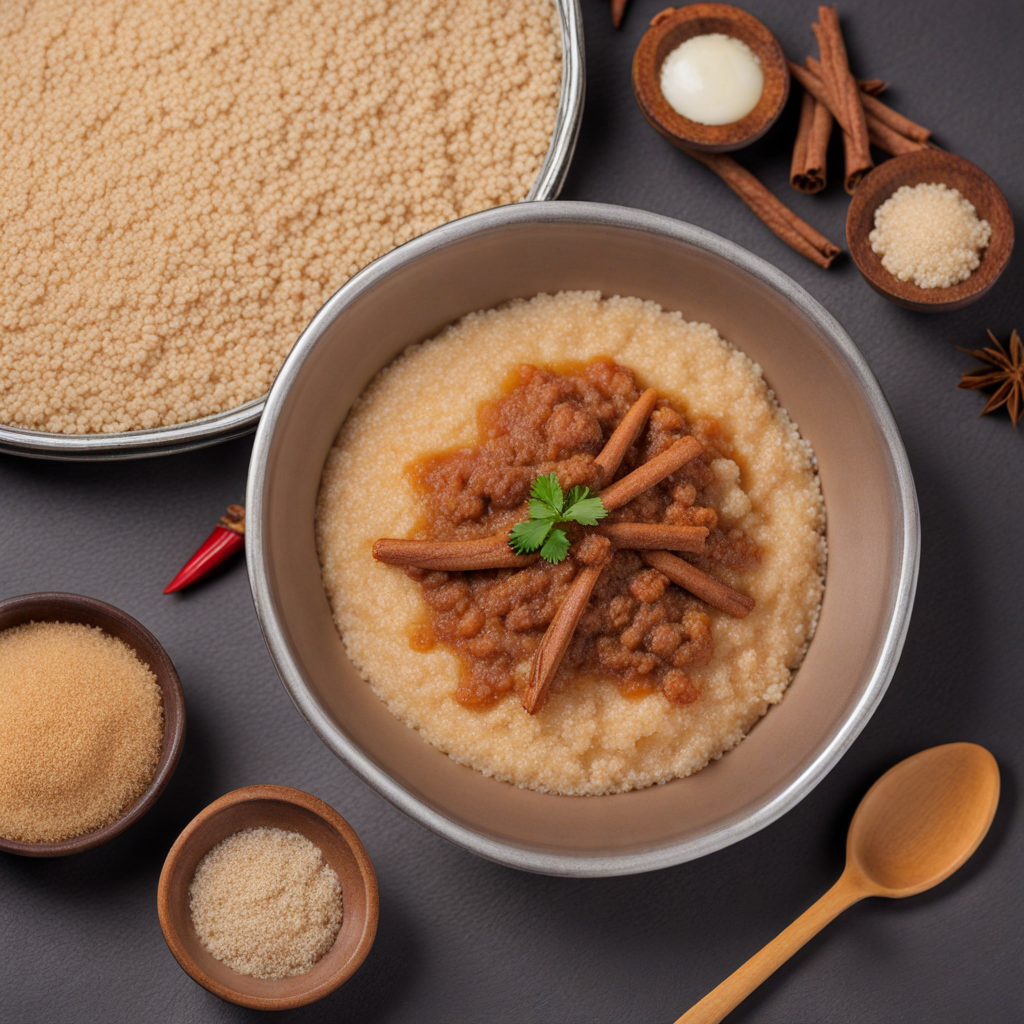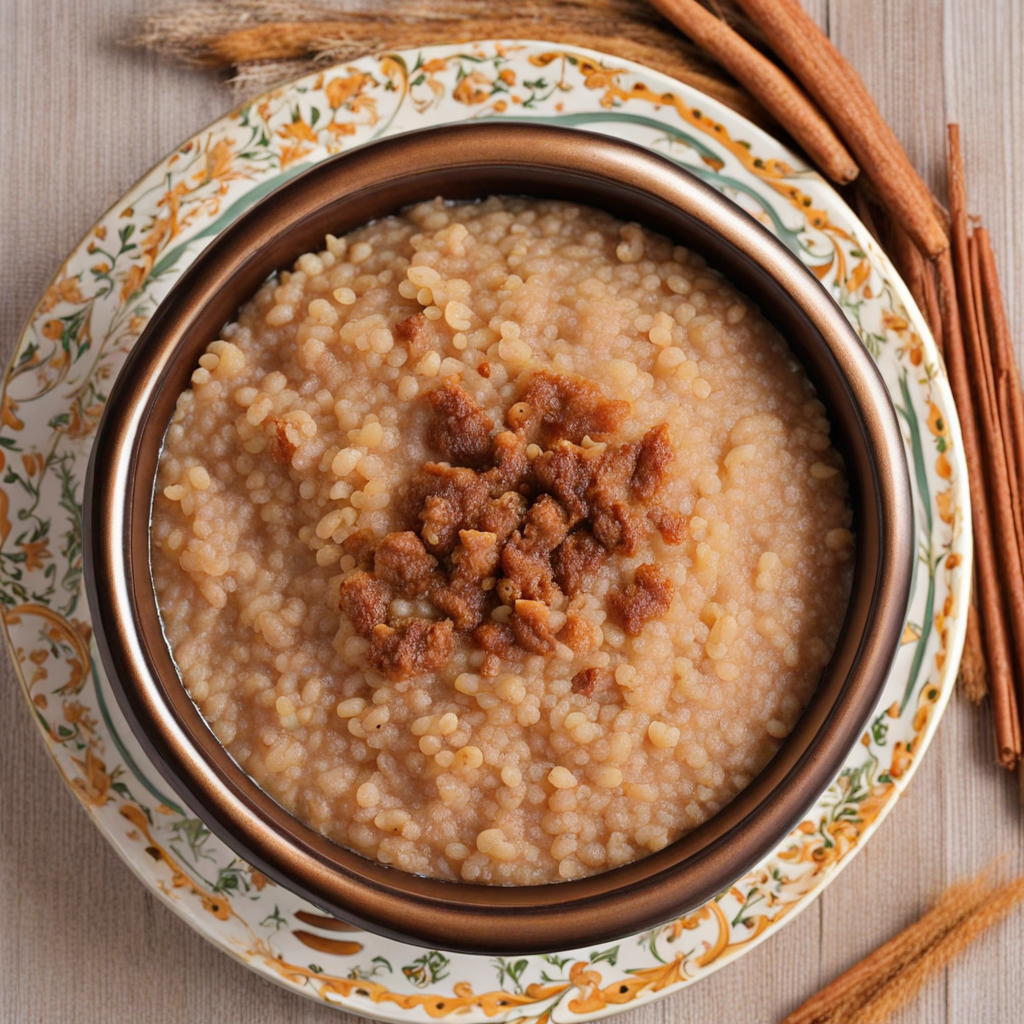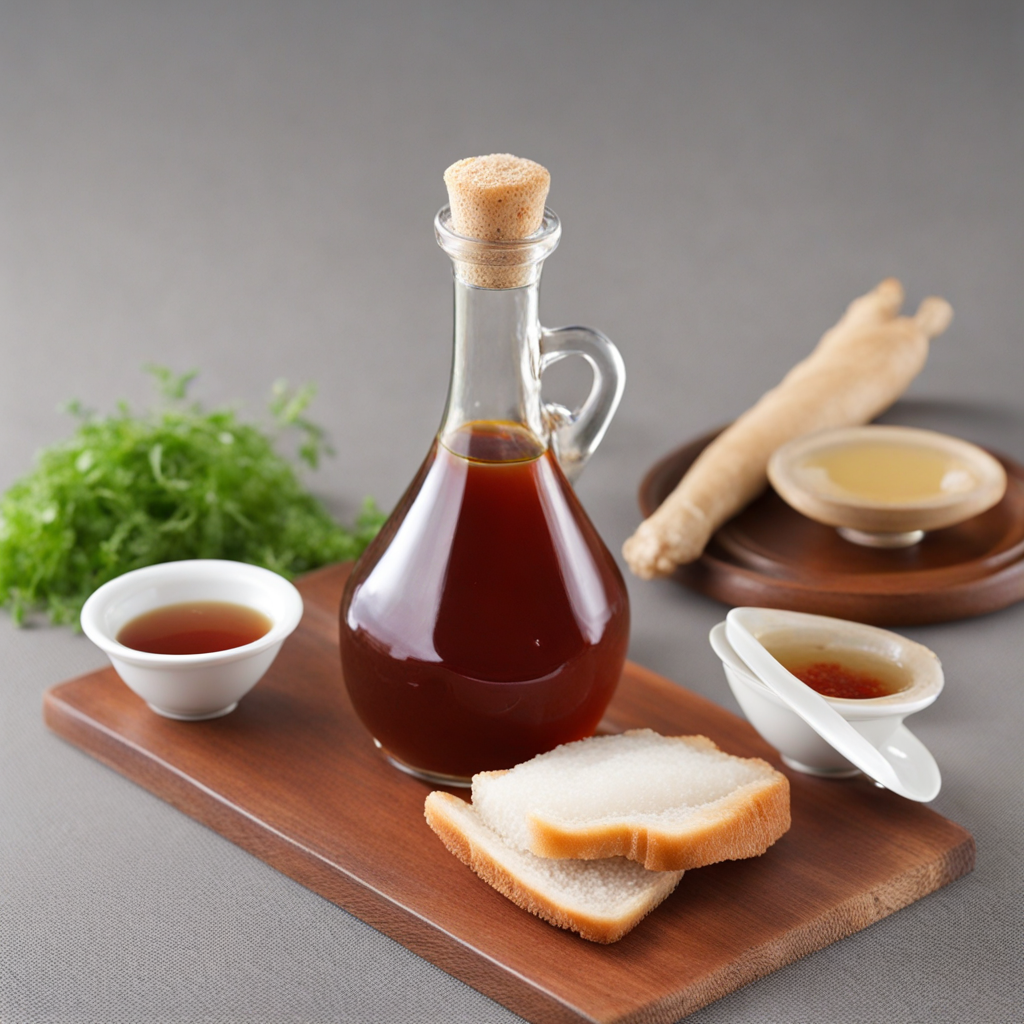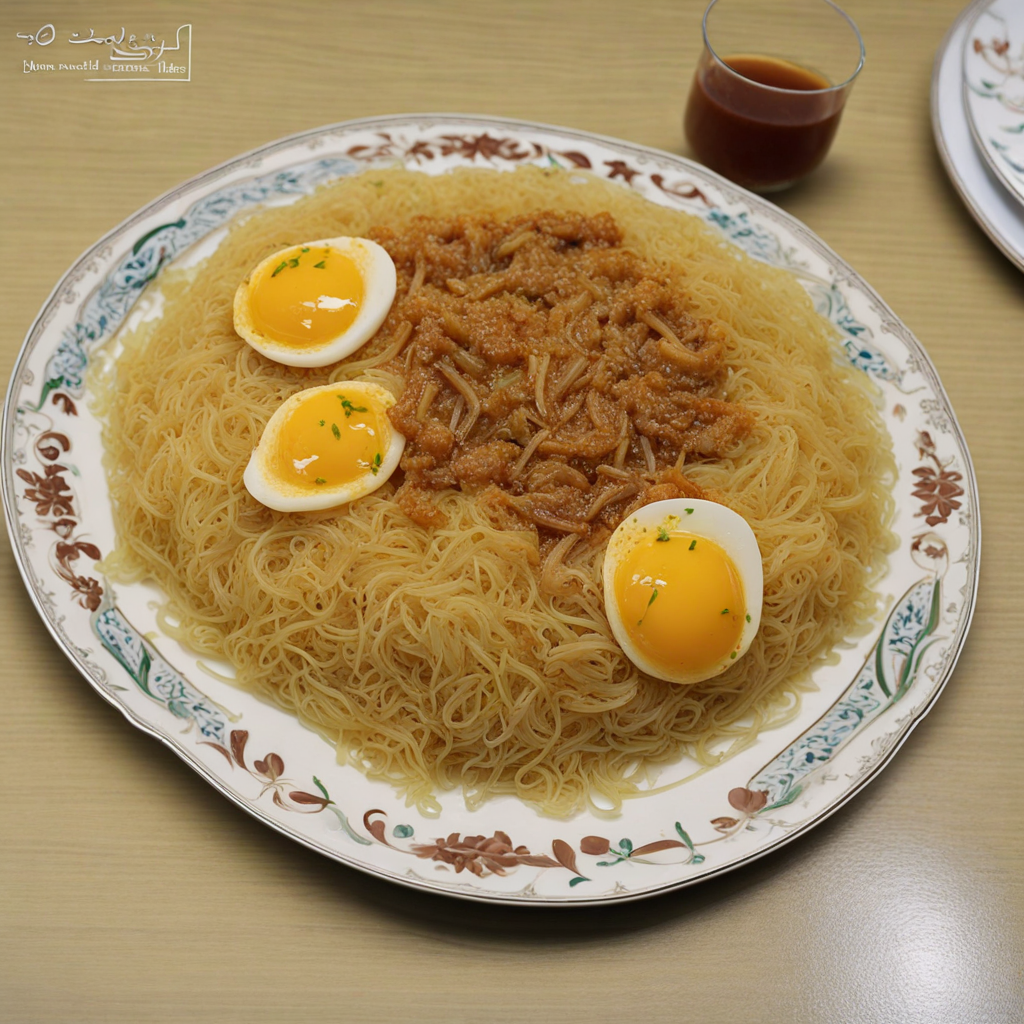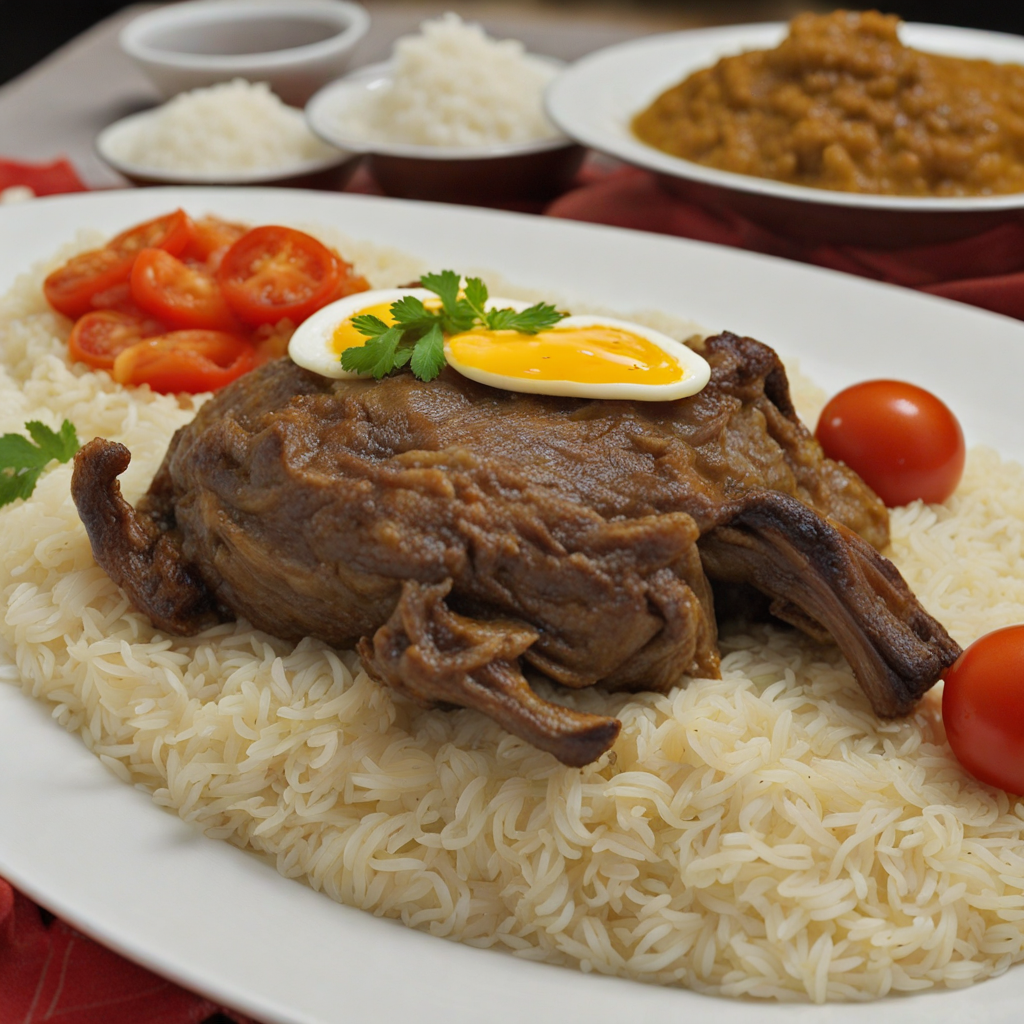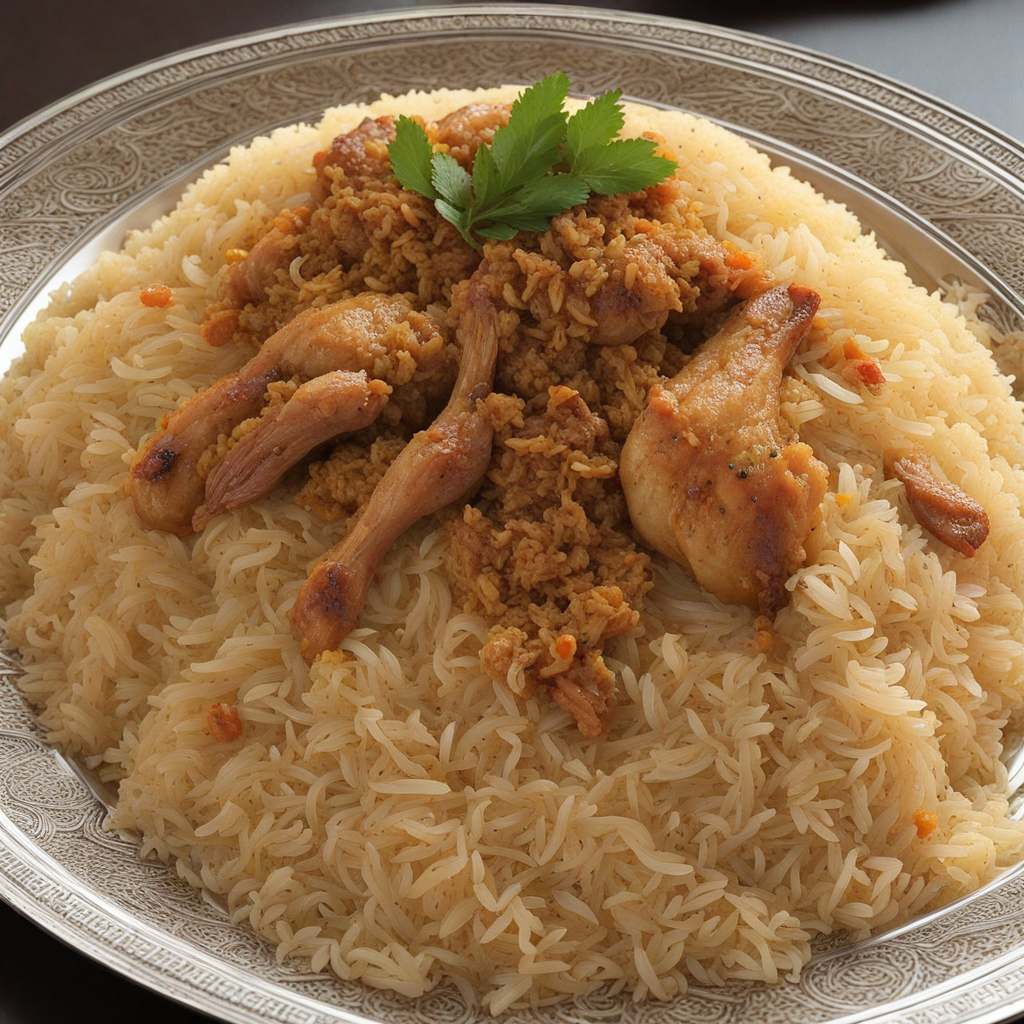Harees
Harees is a traditional dish from Bahrain that beautifully encapsulates the region's rich culinary heritage. This hearty dish is primarily made from wheat and meat, typically chicken or lamb, which are slow-cooked to perfection. The wheat is first soaked, then ground into a coarse paste, and combined with the meat and water, allowing the flavors to meld together over several hours of gentle cooking. The result is a creamy, porridge-like consistency that is both comforting and satisfying, making it a staple during festive occasions and gatherings. The preparation of Harees is a labor of love, often involving communal cooking where families and friends come together to make large batches. The dish is seasoned with spices such as cinnamon, cardamom, and sometimes a hint of saffron, which add depth and warmth to its flavor profile. Traditionally, Harees is served with a drizzle of clarified butter on top, enhancing its richness and providing a luxurious finish that complements the dish’s wholesome ingredients. In Bahrain, Harees is not just food; it is a cultural experience that evokes feelings of nostalgia and togetherness. It is often enjoyed during the holy month of Ramadan, as well as on special occasions like weddings and Eid celebrations. Whether you are savoring it for the first time or revisiting a cherished memory, the unique combination of textures and flavors in Harees promises to transport you to the heart of Bahraini hospitality and tradition.
How It Became This Dish
The History of هريس (Harees) in Bahrain: A Culinary Legacy Harees, a dish that is as rich in flavor as it is in history, is a beloved staple in Bahraini cuisine, embodying the island's cultural heritage and culinary traditions. This dish, made primarily from wheat, meat, and a unique blend of spices, has roots that extend deep into the Middle East, reflecting the region’s diverse influences and rich agricultural practices. Origins of Harees The origins of harees can be traced back to the early settlements of the Arabian Peninsula, where wheat was one of the first crops cultivated by ancient civilizations. Archaeological evidence suggests that wheat cultivation began in the region around 8000 BC, and it quickly became a staple in the diets of various communities. As trade routes flourished, the grain spread throughout the Middle East, leading to the development of numerous wheat-based dishes. Harees itself, which is sometimes referred to as "harissa" in other cultures, is believed to have been introduced to Bahrain and other Gulf countries by the nomadic tribes that traversed the Arabian deserts. These tribes, known for their hospitality, would prepare harees during festive occasions, showcasing their culinary skills and the bounty of their resources. The dish is made by grinding wheat into a coarse flour and cooking it slowly with meat, traditionally chicken or lamb. The result is a rich, porridge-like consistency that is both hearty and nourishing—ideal for the arid climate of the region. Cultural Significance Harees is more than just a dish; it is a symbol of togetherness, celebration, and cultural identity. In Bahrain, harees is traditionally served during religious celebrations, particularly during Ramadan and Eid al-Fitr. The preparation of harees is often a communal activity, with families and neighbors coming together to cook large batches, fostering a sense of community and camaraderie. During Ramadan, harees takes on a special significance. After a day of fasting, families break their fast with a meal that often includes harees, as it provides sustenance and energy. The dish is not only filling but also symbolizes the abundance and blessings of the holy month. The act of sharing harees during these celebrations reflects the values of generosity and hospitality that are deeply ingrained in Bahraini culture. Moreover, harees is often associated with important life events such as weddings, births, and religious ceremonies. It serves as a dish of honor, often prepared for guests to signify respect and warmth. The communal preparation and consumption of harees enhance its significance as a cultural touchstone, connecting generations through shared culinary traditions. Development Over Time As Bahrain has evolved over the centuries, so too has the dish of harees. The influx of different cultures, especially during the trading boom of the 19th century, introduced new flavors and cooking techniques that influenced the traditional preparation of harees. While the core ingredients of wheat and meat remained constant, variations began to emerge based on local tastes and available resources. In the early 20th century, the introduction of more advanced cooking tools and techniques allowed for the refinement of harees preparation. Instead of being ground by hand, wheat could be milled, making the preparation process quicker and more efficient. Additionally, the use of modern cooking appliances has transformed the way harees is made, with slow cookers and pressure cookers becoming popular among contemporary cooks, allowing for a quicker and more consistent result. The globalization of culinary practices has also impacted harees. Today, chefs in Bahrain experiment with the dish, incorporating spices and ingredients from other cultures. For instance, saffron, which was historically used sparingly due to its high cost, is now sometimes added to enhance the flavor and color of harees. Similarly, variations using different types of meat, such as seafood or vegetarian options, have emerged, catering to diverse dietary preferences while keeping the essence of the dish intact. Harees in the Contemporary Culinary Landscape In modern Bahrain, harees continues to hold its place as a cherished dish. It is commonly found in restaurants, especially during Ramadan, and is often featured on menus that celebrate traditional Bahraini cuisine. The dish has not only retained its historical significance but has also adapted to contemporary culinary trends, appealing to both locals and tourists alike. The annual celebrations of Bahraini heritage often highlight harees, showcasing it as a dish that encapsulates the island's identity. Food festivals and cultural events frequently feature harees cooking competitions, where chefs showcase their skills and creativity, further solidifying its status as a symbol of national pride. The resurgence of interest in heritage foods and traditional cooking methods has also paved the way for harees to be recognized on an international stage. As Bahraini cuisine garners more attention globally, harees is often featured in culinary events and festivals, inviting food enthusiasts to explore its rich flavors and history. Conclusion Harees is more than just a dish; it is a reflection of Bahrain's history, culture, and community spirit. From its ancient origins to its role in modern celebrations, harees has adapted and evolved, yet it remains a steadfast symbol of unity and tradition. As Bahrain continues to embrace its culinary heritage, harees will undoubtedly remain at the heart of Bahraini culture, connecting generations and celebrating the island's rich history through the simple act of sharing a meal. The dish is a testament to the resilience of culinary traditions, reminding us of the deep connections that food can create within communities and across cultures.
You may like
Discover local flavors from Bahrain


